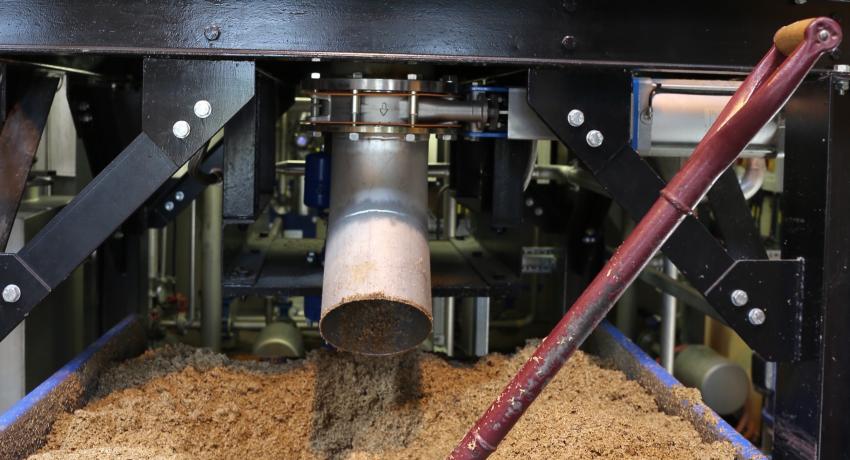The Cotswolds Distillery – Not Cider with Rosie but something a little stronger
Think of the Cotswolds and you think of a gentle, smooth, relaxing landscape; think of Cotswolds whisky and the same three adjectives might spring to mind. Set in a rural area more closely associated with Cider With Rosie than Whisky Galore, the Cotswolds Distillery has been producing gentle, smooth, relaxing English whisky per year since its foundation in 2014.
The first question that I have is why? Why build a distillery in the Cotswolds? But then, the second question is, why not?
Putting his money where his mouth is
The original idea came to city gent Dan Szor, a U.S.-born financier who worked in London with a house in the area where he intended to retire. He loved the Cotswolds and he loved whisky, and presumably realised that he would finally be able to appreciate both at the same time. Perhaps, though, retirement needed to be a bit more active for Dan, and he decided to put his money where his mouth is, literally …
Arriving at the distillery, after a pleasant journey through picturesque villages, along leafy country lanes dodging pheasants and squirrels, one’s eye alights on a stone-built construction with a couple of barns that could easily be mistaken for a dairy farm or a grain mill. Actually, it is a kind of grain mill, they just grind the grain, add yeast and instead of making bread they take it to an extra dimension. Cotswolds currently employs around 50 people and produces around 800,000 bottles of whisky a year, sold worldwide. Though there are around a dozen English distilleries making whisky at the moment, this is the one most people have heard of.
The first room you enter is the visitors centre with its café and shop. I join a group of about 20 visitors, mostly English today but among the c. 30,000 visitors a year are all sorts of nationalities from across the world. Dean is our guide; he used to work in the labs here and so knows his stuff. He mentions first off that if anyone has open shoes he will provide them with crocs, for safety regulations, so I’m glad I’ve got my hiking boots on today.
Production
After an introductory video, Dean leads us onto the production floor and informs us that local barley is malted at Britain’s oldest maltings, Warminster in Wiltshire. After mashing with water from the local mains, the sugary wort is fermented with yeast for a very leisurely 96 hours in a row of 2,500-litre, stainless steel fermenters. Dean is nice enough to warn us against sticking our heads in to smell the beery wash – nice because some tour guides will amuse themselves by telling you to put your head well in and have a sniff. It’s not really a pleasant sensation. It’s a bit like when a glass of cola fizzes up your sinuses from the inside, only 2,500 times worse.
Distillation is done in two Forsyth-made copper pot stills called Mary and Janice, 2.5 and 1.6 thousand litres respectively. Though diminutive in comparison, the stills are very much of the standard, Scottish design and they share the space with two bulbous topped gin stills that can distil wheat spirit into something more immediately sellable while they are waiting for the whisky to mature.
Maturation
The traditionally lengthy process of maturation is done in the barn across the yard, in ex-bourbon, sherry and wine casks. Dean points out that some of the casks are of the innovative STR type (Shaved, Toasted, Recharred), developed by the late Dr Jim Swan, that has divided opinion in the whisky world and is said to speed up maturation besides prolonging the working lives of casks. No more than gin making, speeding up maturation is hardly a bad idea for a new distillery that may not turn a profit for over a decade, you have to say.
I get the chance to have a word with head distiller and ex-cage fighter Nick (I’ve met a few distillers who could try their hand at wrestling, but a cage fighter never; in any case I’ll be careful what I say), who also does the blending along with Dan. Nick, of southern Italian origin - look out for some influence of amaro or grappa in the whisky, you never know - met Dan on a distilling course a few years ago and, under the guidance of industry consultants like Dr Jim Swan and Harry Cockburn, they built the distillery from scratch. From the start, the aim has been to produce a fruity, mild spirit along the lines of the traditional Speyside whiskies - we’re talking gentle, smooth and relaxing here again - using the fruity esters that come from the lengthy fermentation, the traditional swan-neck stills, the souped-up maturation in the STR and first fill bourbon casks.
Tasting notes
In the tasting room at the end of the tour, visitors are offered a sample of Cotswolds whisky, and also their very successful dry gin. Dean explains that the Cotswolds house malt is a 70/30 marriage of STR wine cask, giving notes of summer fruit, citrus and hints of hay, and ex-bourbon cask to give a background of vanilla with more nuances of fruit and oak. It is a 46%, non-chill filtered, naturally coloured spirit - and interesting in that already it has the deep amber colour that we associate with old whisky.
Perhaps there is something to this STR cask thing. Everybody is impressed. It’s a good sign. A fellow visitor Andy next to me is simply astonished. He says that if you told him he’d be sitting here sipping a glass of 4-year-old English whisky and enjoying it, he would have said you were mad.

